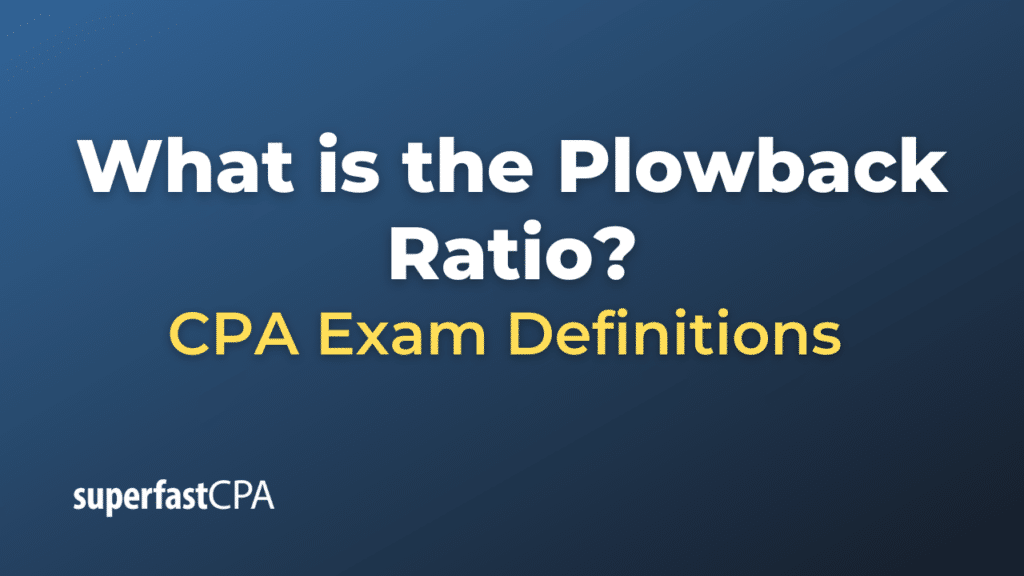Plowback Ratio
The plowback ratio, also known as the retention ratio, is a financial metric that shows the proportion of a company’s earnings that is reinvested back into the business, instead of being distributed to shareholders as dividends. It’s an important indicator of a company’s growth strategy.
The plowback ratio can be calculated using the following formula:
Plowback Ratio = 1 – (Dividends per Share / Earnings per Share)
Alternatively, it can be calculated as:
Plowback Ratio = Retained Earnings / Net Income
A high plowback ratio indicates that a company is reinvesting a significant portion of its earnings back into the business, which could support future growth. Conversely, a low plowback ratio suggests that the company is distributing a larger portion of its earnings to shareholders.
However, a high plowback ratio is not always positive, and a low ratio is not always negative. The impact of a company’s plowback ratio depends on the effectiveness of its investment strategy. If a company can generate high returns on reinvested earnings, a high plowback ratio could lead to strong growth. If it cannot, shareholders might prefer that the company distribute more of its earnings as dividends.
Example of the Plowback Ratio
Let’s assume we have a company named ABC Corp. that has reported earnings per share (EPS) of $5 for the previous year. Out of this, the company decided to pay $2 per share as dividends to its shareholders.
We can calculate the plowback ratio as follows:
Plowback Ratio = 1 – (Dividends per Share / Earnings per Share)
Plugging in our numbers:
Plowback Ratio = 1 – ($2 / $5) = 1 – 0.4 = 0.6 or 60%
So, ABC Corp. has a plowback ratio of 60%, meaning it reinvests 60% of its earnings back into the business and distributes the remaining 40% to its shareholders as dividends.
If ABC Corp. can use this reinvested income effectively to generate high returns, this could lead to increased growth and potentially higher stock prices in the future. However, if the company is not effective at generating returns with its reinvested earnings, shareholders might prefer that more of the company’s earnings be paid out as dividends.














